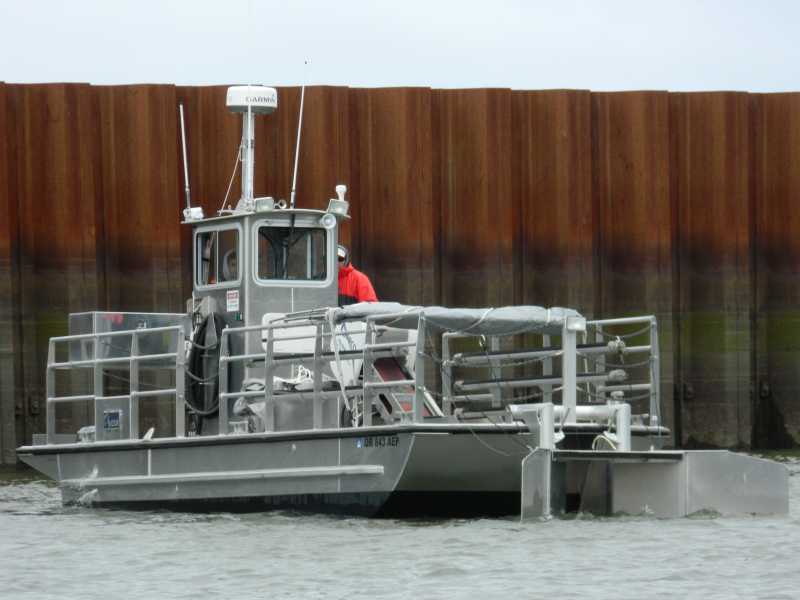Boston-based Sea Machines Robotics has entered into an agreement with the U.S. Department of Transportation’s Maritime Administration (Marad) to demonstrate the ability of Sea Machines’ autonomous technology in increasing the safety, response time and productivity of marine oil-spill response operations.
To make the on-water exercises possible, Sea Machines will install its SM300 autonomous-command system aboard a Marine Spill Response Corp. (MSRC)-owned Marco skimming vessel and will train MSRC personnel to operate the system. Then, on Aug. 21, Sea Machines and MSRC will execute simulated oil-spill recovery exercises in Portland, Maine, before government, naval, international, environmental and industry partners.

The boat carries a Marco filter belt skimmer to recover oil from the surface of the water. Sea Machines Robotics photo
The response skimming vessel was built by Kvichak Marine Industries/Vigor, Seattle, and is equipped with a Marco filter belt skimmer to recover oil from the surface of the water. The boat typically operates in coastal or near-shore areas. Once installed, the SM300 will give the MSRC vessel the following new capabilities:
- remote autonomous control from an onshore location or secondary vessel,
- ENC-based mission planning,
- autonomous waypoint tracking,
- autonomous grid line tracking,
- collaborative autonomy for multi-vessel operations,
- Wireless remote payload control to deploy onboard boom and other response equipment, and
- Obstacle detection and collision avoidance.
Additionally, Sea Machines enables minimally manned and unmanned autonomous operations. Such configurations allow operators to respond to spill events 24/7 depending on recovery conditions, even when crews are unavailable or restricted. These configurations also reduce or eliminate exposure of crewmembers to toxic fumes and other safety hazards.
“Autonomous technology has the power to not only help prevent vessel accidents that can lead to spills but can also facilitate better preparedness; aid in safer, efficient, and effective clean-up,” CEO Michael G. Johnson, Sea Machines, said in a statement announcing the agreement. “We look forward to working closely with Marad and MSRC in these industry-modernizing exercises.”
“Our number one priority is the safety of our personnel at MSRC,” said John Swift, vice president, MSRC. “The ability to use autonomous technology — allowing response operations to continue in an environment where their safety may be at risk — furthers our mission of response preparedness.”




